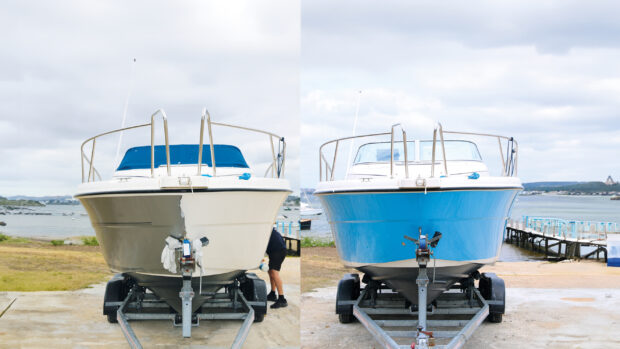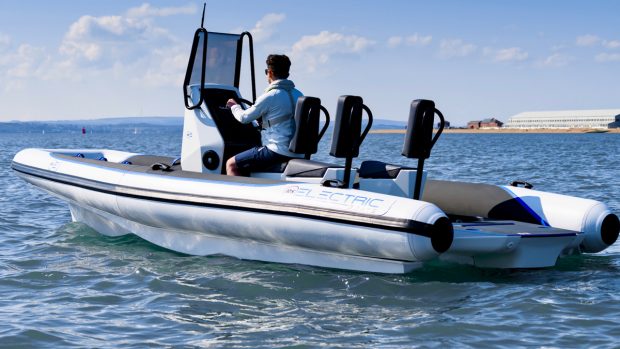If your boat is going into hibernation then there are steps you need to take to ensure it stays in top condition for next season. Jon Mendez explains how to winterise a boat...
Winter can be a great time to use your boat but it’s also an opportunity to put it to bed for a few months and catch up with other things. Whatever you decide to do, a few simple steps will ensure it stays in good nick for the next time you use it.
How to winterise a boat exterior
Whether stored or used, the outside will need to be cleaned and protected against wind, rain and snow. Wait for a dry day to wash it down and add a layer of polish to protect the GRP and stainless steel. The same goes for canopies; add an extra layer of waterproof sealant to help keep the rain out.
If you don’t intend to use the boat over winter, consider investing in an all-over boat cover and, if staying afloat, add extra lines and anti-chafe measures.
How to winterise a boat interior
The cockpit upholstery and interior are most prone to suffer from damp over winter so if shore power is available, use a boat dehumidifier to remove moisture from the air and add a little warmth. Leave cabin and bathroom doors open and try to locate it above a sink so it can self-drain.
If shorepower is not available, moisture traps and desiccant bags are available that don’t need power, albeit with limited capacity. Air circulation also helps prevent mildew so try to encourage a flow of air through any enclosed spaces.
Article continues below…

VIDEO: How To – Leave a windy berth
One of the most daunting manoeuvres a motorboater can face – learn the best way to deal with leaving a

VIDEO – How to: Recommission your boat
With the season coming round fast we guide you through how to recommission your boat and ensure it is in
I leave a porthole open and a skylight on a locked vent. Cushions and mattresses will also benefit from being propped up to maximise air circulation around them.
If your boat has air conditioning, it may have a winter dehumidifying mode; if not then add tube heaters in key locations, preferably with built-in thermostats. They take the edge off the cold without using too much energy.
The fresh water system will either need to be drained, especially if laid up on land where the air temperature drops well below freezing and may cause pipes and fittings to crack, or if staying afloat, reduced to a minimum level to prevent it stagnating over winter.
You should also close the seacocks on the heads and clean them with an eco-friendly cleaner. If it’s a manual toilet, pour 50ml of cooking oil down the pan and pump it through to lubricate the seals.
Engine room
If the boat is staying afloat, the engineroom is unlikely to freeze unless it gets really cold. That said, sensible precautions are to install a tube heater and close any seacocks. If it’s a shaft drive boat, check the stuffing boxes are not leaking; if it’s an outdrive one, trim the legs fully down to prevent barnacle growth on the rams.
Some owners like to cover the engines with old duvets to keep the chill out but if you do, put a large note on the ignition; I know of one boat fire caused by someone who forgot to remove them before starting the engines.
If being stored ashore, then service the engine(s) so it’s sitting there with nice clean oil on the moving parts. If possible, cover the engineroom intakes to reduce the cold air entering and consider slackening any belts and removing the impeller so it does not get stuck in that shape.
Before you do that, fill the sea water cooling system with an antifreeze mixture. Don’t rely on heaters alone; if the power fails you could face a very expensive bill.
Lastly, make sure the batteries are linked to an automatic charger or if your boat is on the hard, remove them and charge them at home.
Fuel
If it’s a petrol boat then run the tank level as low as practical, add fuel stabiliser and run it up to distribute it through the system.
If it’s a diesel boat and you can source diesel with a low biodiesel content (less than the 7% in B7 road diesel) then fill the tanks, leaving a little room for expansion. This will minimise condensation on the tank sides and reduce the risk of diesel bug.
If you can’t source biodiesel-free fuel, then leave the tanks low as some biodiesels attract water. Either way, add a dose of diesel bug preventative.
Lastly, remove or cover any tenders mounted on the stern so they don’t fill with water and strain the platform/davit mechanism, and either stow or take the outboard home to avoid light-fingered opportunists and frost damage.
If you enjoyed this…
Be first to all the latest boats, gadgets, cruising ideas, buying advice and readers’ adventures with a subscription to Motor Boat & Yachting. Available in both print and digital formats, our monthly magazine will be sent directly to your home or device at a substantial discount to the usual cover price. See our latest offers and save at least 30% off the cover price.









